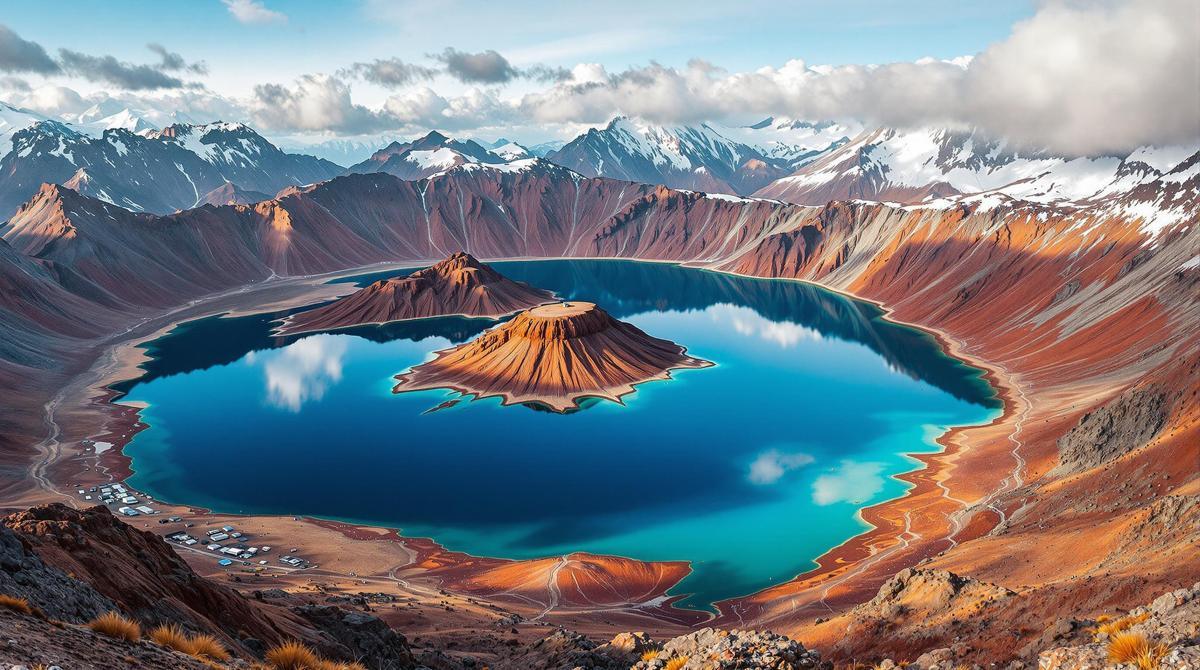The sky reflects upside-down in a perfect mirror of sapphire blue, surrounded by a landscape so barren and otherworldly that astronauts train here to simulate Mars. Welcome to Karakul Lake – Tajikistan’s celestial marvel that sits nearly 13,000 feet above sea level, making it one of the highest alpine lakes on the planet.
A cosmic origin story
What makes Karakul truly extraordinary is its birth – scientists believe this 25-million-year-old lake formed when a massive meteorite slammed into Earth, creating a crater that eventually filled with water. The name “Karakul” means “Black Lake” in Kyrgyz, though its waters shift between deep blue and turquoise depending on the light.
“When I first saw Karakul, I felt like I was standing on another planet. The silence is profound, and the vastness makes you contemplate your place in the universe,” says Marco Reynolds, a geologist who studies impact craters worldwide.
The roof of the world highway
Reaching this remote wonder requires traveling the legendary Pamir Highway (M41), one of the world’s highest international roads. The journey itself is half the adventure, winding through mountains that Tajiks call “The Roof of the World.” From Dushanbe, Tajikistan’s capital, expect a two-day journey through landscapes that transition from lush valleys to stark, moon-like terrain.
For astronomy enthusiasts, this remote location rivals Chile’s astronomical paradises with night skies so clear that the Milky Way casts shadows on moonless nights.
Life at extreme altitude
The small village of Karakul sits on the eastern shore, home to about 100 hardy souls – mostly ethnic Kyrgyz who have adapted to life in one of Earth’s most challenging environments. Temperatures can plummet to -50°F in winter, and even summer nights dip well below freezing.
These semi-nomadic people welcome visitors into traditional yurts (round felt tents) for homestays that offer authentic cultural immersion. Much like Morocco’s ancient earth-crafted settlements, these dwellings represent human ingenuity in harsh environments.
A geological phenomenon
Karakul is actually two lakes in one – the eastern basin contains freshwater, while the western side is saltwater, with no connection between them. The surrounding mountains create a rain shadow effect, making this landscape almost as arid as the driest deserts on Earth.
“The geological uniqueness of Karakul is unparalleled. It’s essentially a living laboratory for studying extreme environments and adaptation,” explains Dr. Sarina Khasanov, Tajik environmental scientist.
Trekking the lunar landscape
For adventurous travelers, hiking around Karakul reveals otherworldly terrain – golden grasses near the shore give way to barren slopes and snow-capped peaks. The trek to Aral Yuj viewpoint offers panoramic vistas that seem to stretch to infinity.
Digital nomads seeking truly remote workspaces should note that while Karakul has limited connectivity, nearby towns like Murghab offer basic internet access. Those seeking longer stays might explore countries with digital nomad visa options in the region.
Essential visitor tips
Visit between July and early September when temperatures are mildest. Pack for extreme weather regardless of season – nighttime temperatures drop dramatically even in summer. Altitude sickness is a genuine concern; acclimatize properly in Murghab before proceeding higher.
Unlike popular digital nomad hubs like Bali or Chiang Mai, facilities here are extremely basic. Bring cash, medications, and emergency supplies – you’re now in one of Earth’s most remote regions.
A frontier worth crossing
In a world where true wilderness becomes increasingly rare, Karakul represents one of our planet’s last great frontiers. It offers what luxury destinations cannot – an encounter with Earth at its most primordial and pristine. Standing beside these ancient waters, watching the mountains reflect in their depths, you’ll understand why travelers brave the journey to witness this astronomical miracle hiding in Tajikistan’s celestial highlands.
